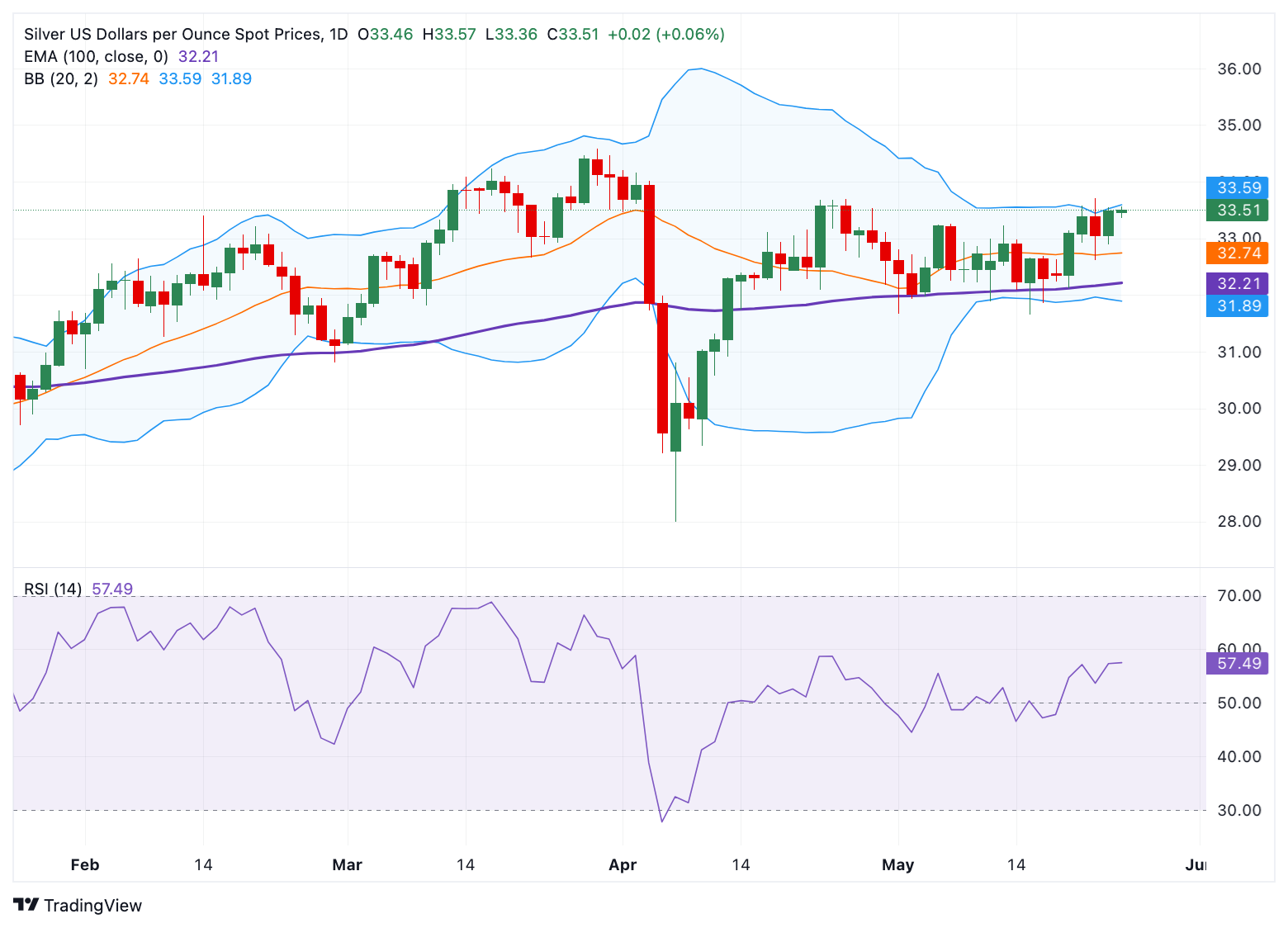Silver Price Forecast: Bullish outlook remains in play near $33.50
- Silver price posts modest gains to near $33.50 in Monday’s early European session.
- The positive view of the metal prevails above the key 100-day EMA with the bullish RSI indicator.
- The immediate resistance level emerges at the $33.60-$33.70 region; the first support level to watch is $32.61.
The Silver price (XAG/USD) trades with mild gains around $33.50 during the early European session on Monday. The escalating geopolitical tensions along with the weaker Dollar (USD) provide some support to the safe-haven currency like the Japanese Yen (JPY). Traders will keep an eye on the Bank of Japan's (BoJ) Governor Kazuo Ueda speech later on Monday.
Technically, the constructive outlook of Silver remains in place as the white metal is well-supported above the key 100-day Exponential Moving Average (EMA) on the daily chart. The upward momentum is reinforced by the 14-day Relative Strength Index (RSI), which stands above the midline near 57.45, displaying bullish momentum in the near term.
The first upside barrier emerges in the $33.60-$33.70 zone, representing the upper boundary of the Bollinger Band. A decisive break above this level could pick up more momentum and aim for $34.60, the high of May 28. Further north, the crucial resistance level is seen at the $35.00 psychological level.
In the bearish case, the low of May 22 at $32.61 acts as an initial support level for the white metal. A breach of this level could drag the major pair toward 32.20, the 100-day EMA. The additional downside filter to watch is $31.0 and the lower limit of the Bollinger Band.
Silver (XAG/USD) daily chart

Silver FAQs
Silver is a precious metal highly traded among investors. It has been historically used as a store of value and a medium of exchange. Although less popular than Gold, traders may turn to Silver to diversify their investment portfolio, for its intrinsic value or as a potential hedge during high-inflation periods. Investors can buy physical Silver, in coins or in bars, or trade it through vehicles such as Exchange Traded Funds, which track its price on international markets.
Silver prices can move due to a wide range of factors. Geopolitical instability or fears of a deep recession can make Silver price escalate due to its safe-haven status, although to a lesser extent than Gold's. As a yieldless asset, Silver tends to rise with lower interest rates. Its moves also depend on how the US Dollar (USD) behaves as the asset is priced in dollars (XAG/USD). A strong Dollar tends to keep the price of Silver at bay, whereas a weaker Dollar is likely to propel prices up. Other factors such as investment demand, mining supply – Silver is much more abundant than Gold – and recycling rates can also affect prices.
Silver is widely used in industry, particularly in sectors such as electronics or solar energy, as it has one of the highest electric conductivity of all metals – more than Copper and Gold. A surge in demand can increase prices, while a decline tends to lower them. Dynamics in the US, Chinese and Indian economies can also contribute to price swings: for the US and particularly China, their big industrial sectors use Silver in various processes; in India, consumers’ demand for the precious metal for jewellery also plays a key role in setting prices.
Silver prices tend to follow Gold's moves. When Gold prices rise, Silver typically follows suit, as their status as safe-haven assets is similar. The Gold/Silver ratio, which shows the number of ounces of Silver needed to equal the value of one ounce of Gold, may help to determine the relative valuation between both metals. Some investors may consider a high ratio as an indicator that Silver is undervalued, or Gold is overvalued. On the contrary, a low ratio might suggest that Gold is undervalued relative to Silver.

